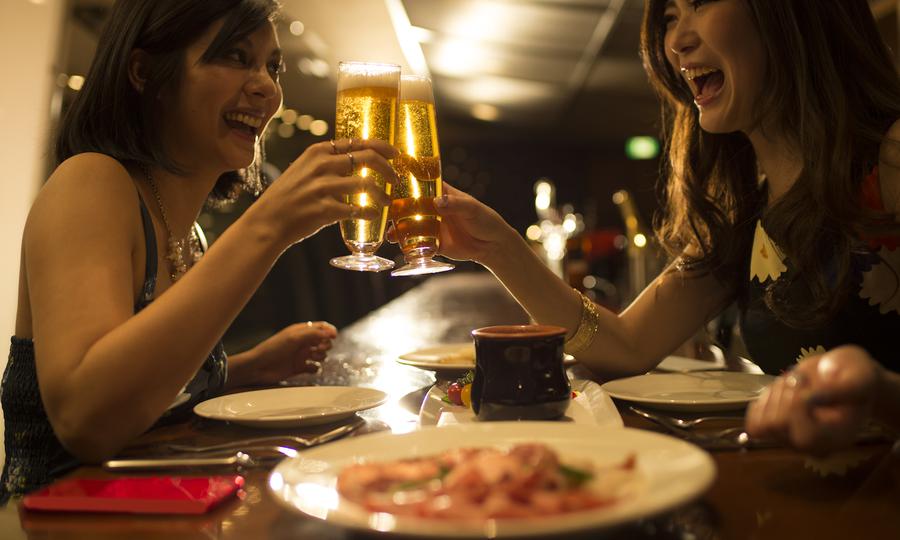[Analytics] Getting richer, getting drunker in Asia

“Heavy episodic drinking” has increased significantly in China, Thailand, Timor Leste and Vietnam, new research shows. Photo: iStock/Getty Images
Rising incomes mean that Asians are increasingly likely to get drunk at least once a month, according to new data underpinning a report on global drinking habits published this week in The Lancet, a British medical journal. Simon Roughneen specially for the Asia Times.
Since 1990, so-called “heavy episodic drinking” has increased significantly in China, Thailand, Timor Leste and Vietnam. Tiny Bhutan, source of the concept of “gross national happiness,” coined by the country’s king in 1972 as an alternative to the standard economic yardsticks of gross national product or income per capita, is more often drowning its sorrows.
While 16% of Chinese drinkers opted for a heavy session once a month in 1990, by 2017 that percentage has nearly doubled to 30%. The corresponding figures for Vietnam were 16% to 24% while Thailand saw a jump from 18% to 25%. Bhutan and East Timor, two of Asia’s smallest states, saw similar increases of 14% to 22% and 12% to 20%.
Elsewhere in Asia, countries such as India, Malaysia, Myanmar and the Philippines all saw smaller increases in the percentages of people fond of throwing back a few too many beers or shots, though those percentages must be weighed against significant population growth over the past three decades, as well as India’s huge overall population.
The surge in getting inebriated has come in tandem with fast economic growth and rising wages across much of Asia, turning poor countries into middle income countries and putting middle income countries on the cusp of joining the world’s wealthiest, as happened in the ’70s and ’80s with Singapore, Hong Kong, Taiwan and South Korea.
More people have more money to spend and it seems splashing out on a boozy Friday or Saturday night is increasingly en vogue.
“What happens is that more and more people give up abstinence and start drinking, as it is associated with desirable lifestyle and [is] affordable,” said Jürgen Rehm of the University of Toronto, a co-author of The Lancet paper.
Wealthier Asia-Pacific counties with a well-established booze culture, such as Japan and South Korea, saw slight drops, while Australia’s pint-downing cohort was the same size percentage-wise as it was nearly three decades ago.
But bar-hoppers in Australia, Japan and South Korea are still more likely to binge than their increasingly thirsty Chinese or Vietnamese counterparts, with heavy episodic drinking percentages of 36%, 39% and 40%, respectively, for 2017.
Leaving aside the region’s party animals and bingers, drinking overall is up across the region.
The Lancet research suggests that “between 1990 and 2017, adult alcohol per-capita consumption increased by 104% in the South East Asia region and by 54% in the Western Pacific region,” referring to country groupings used by the World Health Organization.
Country by country percentages of “current drinkers” – to distinguish from teetotallers on the one hand and “heavy episodic drinkers” on the other – increased in most places from 1990-2017.
Not surprisingly, growing affluence around Asia has seen Big Booze expand its presence in the region, with giants such as Diageo, the company that owns Guinness, as well as Dutch beer behemoth Heineken, setting up new ventures in the region in recent years.
Heineken even opened a brewery near Timor Leste’s capital, Dili, a city of around 250,000 people in a country of only 1.2 million.
“Advertisements and marketing in general has an important role in this: it depicts the image of a desirable ‘modern’, Western-oriented lifestyle to countries, which had been predominantly abstaining,” Rehm said.
While a cocktail of increasing affluence, a thirst for a tipple, and aggressive marketing by beer and spirits companies have combined to drive up drinking across much of Asia, those factors are still sometimes trumped by religion. That’s particularly true in the region’s Muslim majority countries, some of which ban Muslims from consuming alcohol and make it difficult for non-Muslims to get a drink.
The main exception is Central Asia, a region where Muslim majority countries feature relatively high levels of drinking. Ironically, Russia, long-time colonizer that dominated and remains influential in Central Asia, has seen its own drinking levels decrease over recent decades, as has Western Europe.
Back in Asia, India, which The Lancet study lists as seeing huge absolute increases in overall drinking, includes among its vast population close to 200 million Muslims, a cohort likely largely included in the 57% of Indians who still do not drink alcohol at all.
For Muslim majority countries, the percentages are starker, with lifetime abstainers well over 90% in Afghanistan, Bangladesh, Brunei and Pakistan, and close to 80% in Indonesia.
“[Islam] overrides economic wealth, such is the case with Brunei or some of the Gulf countries,” said Rehm.